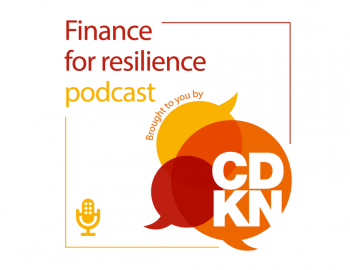WORKING PAPER: Leveraging private sector finance for climate compatible development
WORKING PAPER: Leveraging private sector finance for climate compatible development
Developments in the international climate negotiations and the climate finance landscape, in particular the signing of the Paris Agreement and operationalisation of the Green Climate Fund, have opened up opportunities for enhanced private sector action on climate change. The Paris Agreement demonstrates a common global acknowledgement that urgent climate action is needed, and there is broad consensus among the signatories that translating the agreement into action will require significant finance from the private sector.
The Paris Agreement sets a target of US$100 bn per year of climate finance by 2020, which is expected to be mobilised by developed countries and channelled through the Green Climate Fund. According to the International Energy Agency, to limit temperature increase to 2°C, cumulative investment of US$53 trillion will be needed by 2035. This represents, between US$780 bn and US$2.3 trillion annually by 2020 and 2035, respectively, in low-carbon infrastructure investment. Public sector balance sheets are only able to cover a small proportion of this. All stakeholders must therefore seek ways to facilitate private sector finance in climate projects.
How can governments, international programmes and other stakeholders create an enabling environment for private investment in climate action? This new paper from Charlotte Ellis and Kamleshan Pillay shares the following key lessons from CDKN’s experience:
- Private sector engagement requires a country-based and context-specific approach.
- Public policy is a fundamental tool for influencing how the private sector views climate finance.
- The business case for private sector involvement is specific to an individual project’s characteristics, and its sector dynamics.
- Aligning language and interests with the private sector will help gain their buy-in.
- Leveraging private sector finance requires involving private sector actors in the design phase.
- Pilot projects help demonstrate the business case for private sector investment.
- Risk-sharing measures, such as insurance and guarantees, can reduce financial risks and facilitate private sector participation.
- Innovative financial instruments can facilitate private sector investment in climate compatible development projects.
- Using existing micro, small and medium-sized enterprises (MSMEs) and financial institutions presents a further opportunity to bring in private sector finance.


